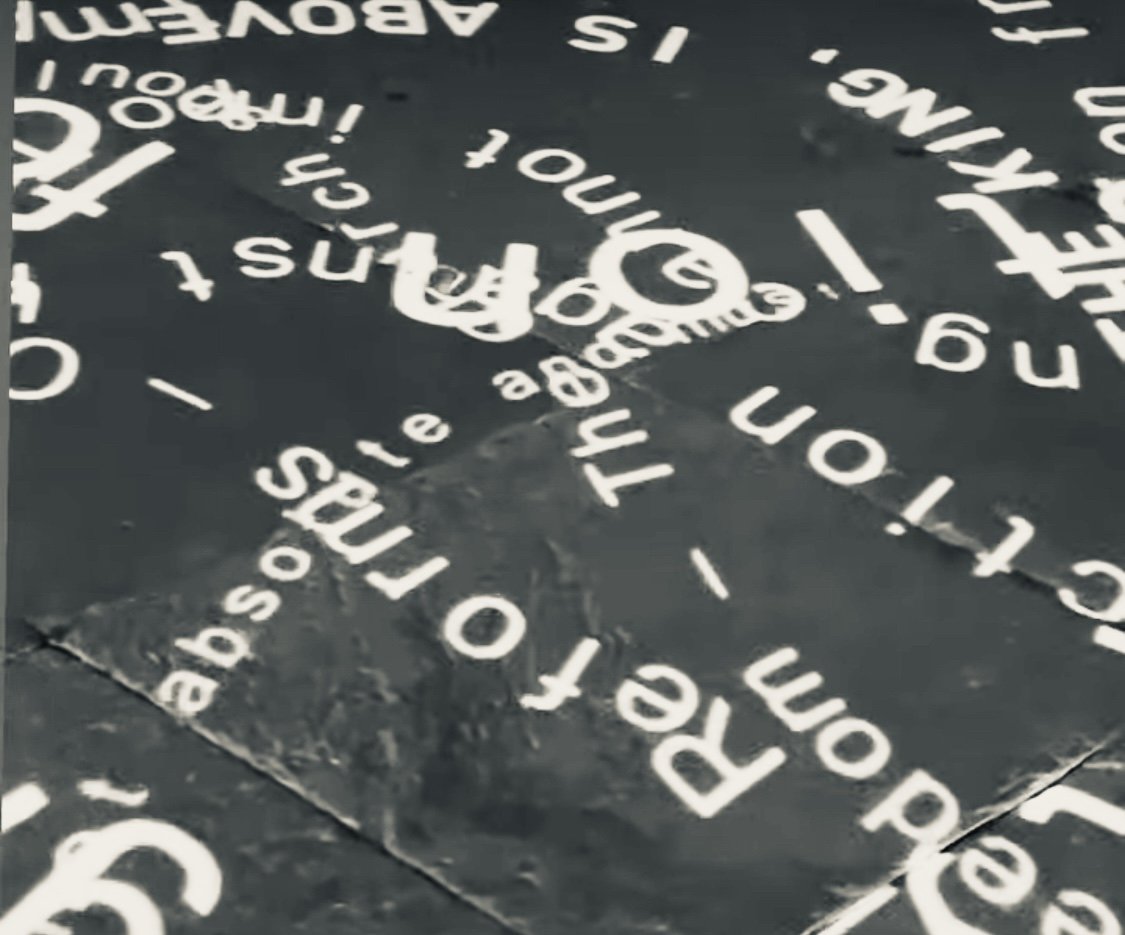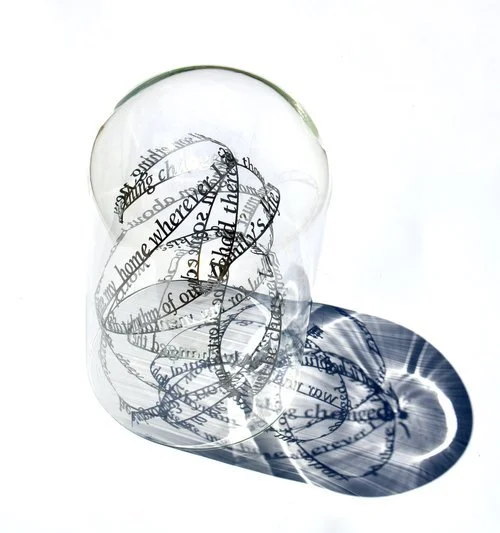This series entitled Artwork Focus is written by Shireen Marican, giving her explorations of the artworks in the Intersection exhibition. Shireen is a writer, art assistant and visual arts organiser, who has gained unique insight through her visits to Nicola’s art studio, observing the creation process of the works. This article focuses particularly on the artwork After Oud.
Twelve glass jars sit atop a wooden display piece, all capped with the familiar gold embellishment that seems to be a recurring artwork visual in the exhibition. As you move closer to this wooden table display, you catch a faint but lasting whiff of earthy scents, or Oudh – a delicate fragrance familiar to Kampong Glam.
After Oud is a collection of glass jars in different shapes and sizes that chooses Singapore’s Bussorah Street in Kampong Glam as muse. Within these jars, strings of words in blue and gold taken from Marc Nair’s poem of the same name (“After Oud”) dangle together. Like Marc, Nicola is inspired by Bussorah Street and its famous aromatic scent store that has served the Kampong Glam community for years.
“I often frequent the aromatic stores on Bussorah Street to stock up on incense sticks which I use in my artwork, trying to find a different and fitting scent for each. So the ‘oud’ scent has a very personal meaning for me. But Oud also has an ancient history, coming from the wood of the Southeast Asian Agar tree only when it is infected with a particular type of mold.”
These aromatic scents are oils known as minyak attar, or essential oil in Malay language that is derived from the word attar, the Arabic transliteration of the word scent. Minyak attar is a historical product that was significant in the traditional trade heritage of the Kampong Glam cultural precinct. Almost 70 years later since this trade was first introduced in 1938, the minyak attar is still in demand by the community and tourists alike, and contributes to the intangible heritage of the precinct.
“I wanted to capture Marc’s poem After Oud like it was a floating scent, delicate and perhaps decaying, within decadent gold and glassy vessels. The words are cut like strands of lace, made of blue pigment and gold leaf. Each is suspended, quivering, on a rotary mechanism within its capsule. By capturing these redolent specimens I hope to preserve the poignancy of Oud, and the “chemical poetry” of Marc’s words.”
As you take a longer and lasting look at the jars, you notice the slight and gentle rotation of these dangling strings of words. These kinetic sculptures, as Nicola calls them, are likened to “an army of little creatures, beings, or moments”, that are captured in jars. This multisensory work is a parallel to the lingering scent of oud – this musky and earthy aroma stays in your olfactive memory long after you’ve encountered it. Just like the timelessness of poetry and heritage, the documentation of narratives and stories captured in the form of stanzas or cultural expressions are all moments in time – temporal yet alive in memories.
This artwork is part of a body of work entitled Intersection, created as a collaboration between poet Marc Nair and artist Nicola Anthony. See the full catalogue of visual artworks here. Artworks from the series available for purchase at Intersections Gallery.











